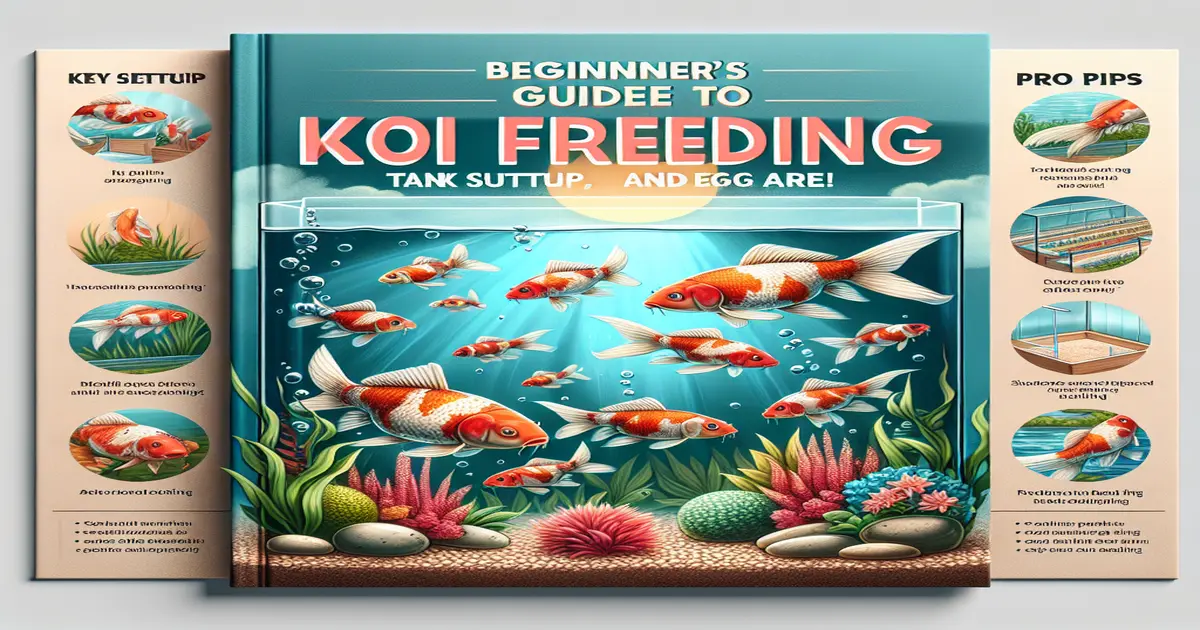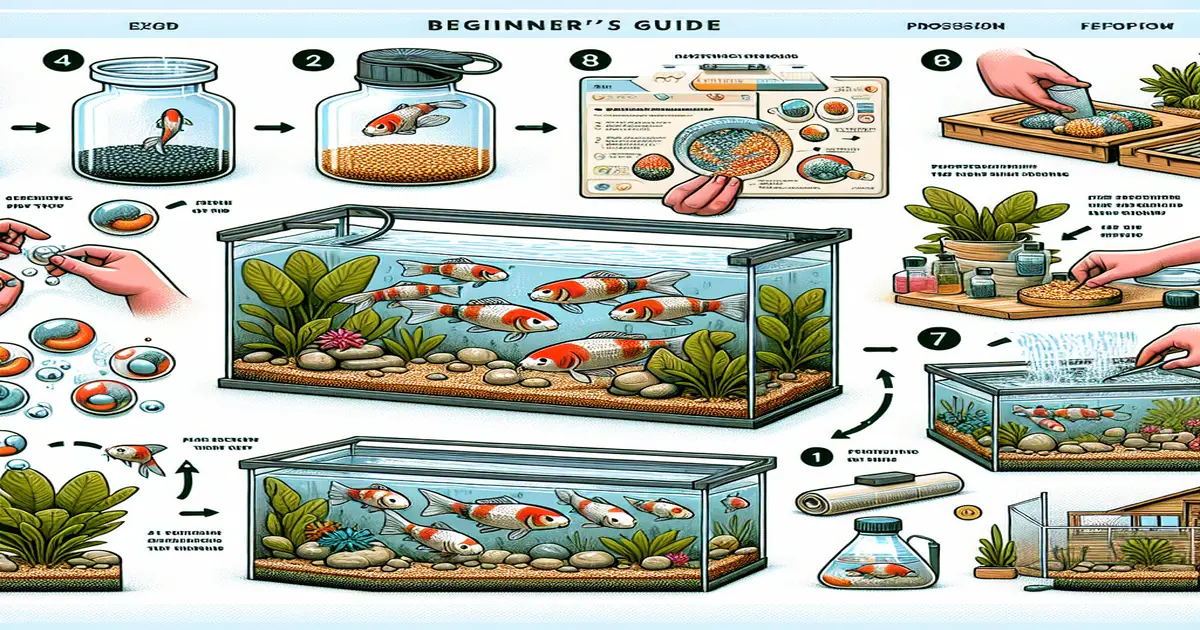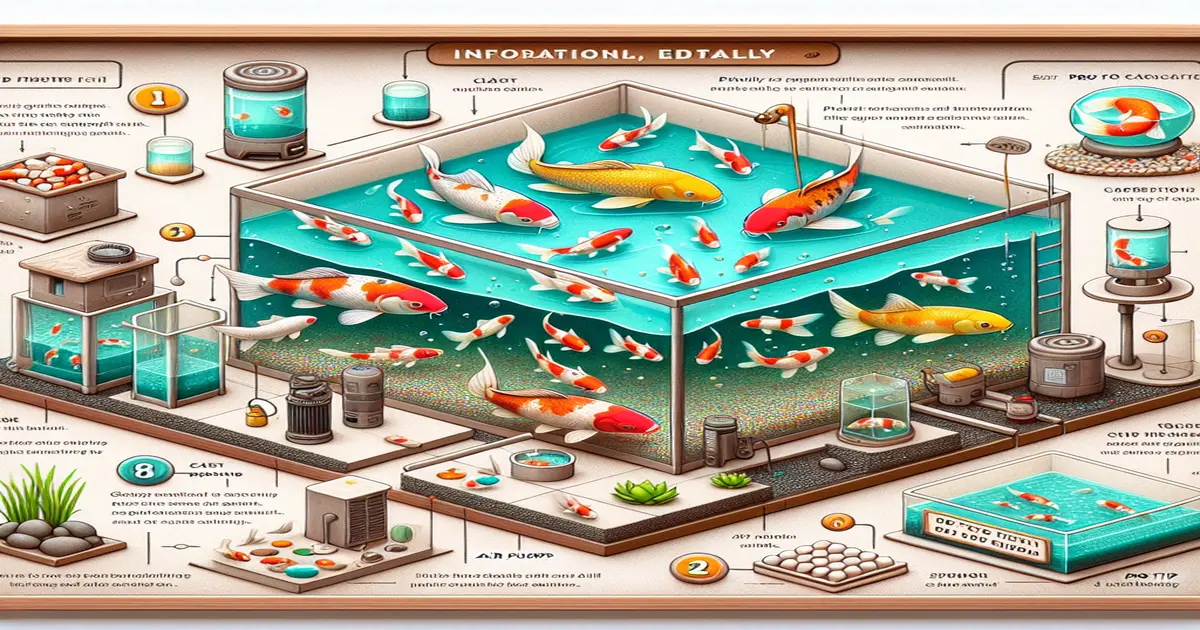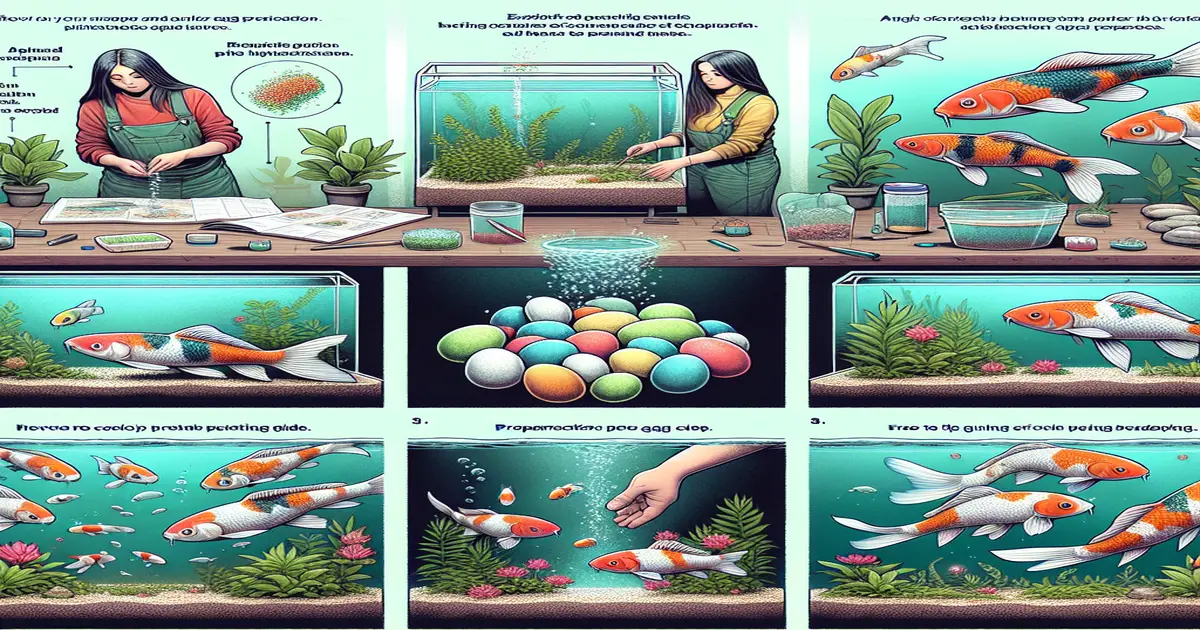Breeding koi fish can be a rewarding pastime that brings beauty and tranquility to your backyard pond. If you’re an aquarist, hobbyist, or fish breeder looking to venture into the captivating world of koi breeding, this guide is for you. We’ll walk you through the essential steps, equipment, and considerations to get started on your koi breeding adventure.

Understanding the Basics of Koi Fish Breeding
What is Koi Fish Breeding?
Koi fish breeding is the process of selectively mating koi fish to produce offspring with desirable traits. Breeders aim to enhance specific characteristics such as color, pattern, and body shape. This process requires patience, knowledge, and attention to detail.
Why Breed Koi Fish?
Breeding koi can be a gratifying experience for several reasons. It allows you to create unique and stunning fish, contribute to the koi breeding community, and potentially generate income by selling high-quality koi. Additionally, breeding koi can deepen your understanding of fish care and genetics.
The Downsides of a Koi Breeding Program
While breeding koi is exciting, it also comes with its challenges. It’s important to consider the time, space, and financial commitment required. Breeding koi involves culling, which means selecting and removing less desirable offspring. This process can be emotionally challenging for some breeders.
Essential Equipment for Breeding Koi Fish
Overview of Necessary Equipment
To successfully breed koi, you’ll need specific equipment to create an ideal environment for mating and egg development. Proper equipment ensures the health and well-being of both the adult koi and their offspring.
Breeding Tanks and Hospital Tanks
Breeding tanks should be large enough to accommodate adult koi comfortably. A recommended size is at least 500 gallons. Hospital tanks are essential for isolating sick or injured fish and ensuring they receive the care they need. Both tanks should have proper filtration and water circulation.
Additional Equipment
In addition to tanks, you’ll need filters, water pumps, heaters, and spawning brushes. Filters help maintain water quality, while water pumps ensure adequate circulation. Heaters regulate water temperature, which is crucial for successful breeding. Spawning brushes provide a surface for koi to lay their eggs.

Finding the Right Location for Breeding Tanks
Importance of Location and Accessibility
Choosing the right location for your breeding tanks is critical. Ensure the tanks are easily accessible for feeding, monitoring, and maintenance. A convenient location makes it easier to manage the breeding process effectively.
Avoiding Direct Sunlight
Place your breeding tanks in a shaded area to avoid direct sunlight. Excessive sunlight can lead to temperature fluctuations and algae growth, negatively affecting water quality. A stable and controlled environment is essential for successful breeding.
Proximity to a Water Source
Having your breeding tanks close to a water source simplifies water changes and maintenance. Easy access to water makes it more convenient to fill, clean, and manage the tanks, ensuring a healthy environment for your koi.
When Is Breeding Season for Koi Fish?
Understanding Optimal Breeding Conditions
Koi fish typically breed in the spring when water temperatures range between 65°F and 75°F. Understanding the optimal breeding conditions helps you prepare your koi and their environment for successful mating.
Determining Local Breeding Times
Research local climate patterns and breeding times to determine the best period for your koi. Observing the behavior of your fish can also indicate when they are ready to breed. Look for signs of increased activity and chasing behavior.

Preparing the Koi Pair for Breeding
Selecting Healthy Koi Fish for Breeding
Choose healthy, mature koi with desirable traits for breeding. Look for fish that are free from diseases and deformities. A strong gene pool increases the likelihood of producing high-quality offspring.
Creating a Conducive Environment
Prepare the breeding tank with proper lighting and water conditions. Maintain stable water temperature and quality. Introduce spawning brushes or materials to provide a surface for the female koi to lay eggs.
The Breeding Process
Detailed Steps of Koi Mating Behavior
Koi mating behavior involves the male chasing the female and nudging her sides to release eggs. The female then scatters the eggs, which the male fertilizes. This behavior can be aggressive, so closely monitor the process.
Monitoring and Managing Aggression
Breeding can lead to aggressive behavior among koi. Keep an eye on the fish to prevent injuries. If aggression becomes excessive, consider separating the fish temporarily to ensure their safety.
Caring for Koi Eggs
Post-Breeding Adult Care and Egg Handling
After breeding, separate the adult koi from the eggs to prevent them from eating the eggs. Maintain the water quality and temperature in the breeding tank to support egg development. Handle the eggs gently to avoid damage.
Maintaining Water Chemistry and Temperature
Keep the water clean and stable by performing regular water changes. Monitor the temperature to ensure it remains within the optimal range for egg development. Proper water chemistry is essential for healthy fry.
Identifying and Removing Unfertilized Eggs
Unfertilized eggs can develop fungus and harm the healthy eggs. Regularly inspect the eggs and remove any that appear cloudy or white. This practice helps maintain a healthy environment for the developing fry.

Breeding Koi in a Pond
Pros and Cons of Pond Breeding
Breeding koi in a pond offers a more natural environment but comes with challenges. Ponds provide ample space and hiding spots for the fry, but controlling water quality and temperature can be more difficult.
Providing Nesting and Hiding Places
Ensure the pond has plenty of hiding spots and nesting areas for the koi. Plants, rocks, and spawning mops can provide the necessary surfaces for egg laying and protection for the fry.
Conclusion
Breeding koi fish is a rewarding endeavor that allows you to create beautiful, unique fish while contributing to the koi community. By understanding the basics, preparing the right equipment, and creating an ideal environment, you can successfully breed koi and enjoy the process. Start your koi breeding journey today and experience the joy of raising these magnificent fish.
For more information and tips on koi breeding, explore our additional resources and connect with our community of koi enthusiasts. Happy breeding!



